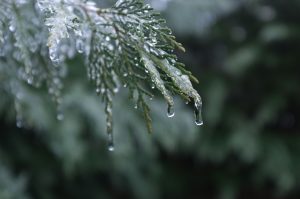Ready for Fall Rains?
This piece is intended to complement last month’s piece on the decline of the frequency of heat waves in WA state during the late summer. More specifically, here we describe how soon we can expect to begin enjoying our fall rains, based on historical data.
Read moreU.S. Climate Resilience Toolkit Climate Explorer
There is a large and growing number of web applications serving climate data. Notably, the U.S. Climate Resilience Toolkit (toolkit.climate.gov/ tools) has over 500 digital tools in its catalog catering to a wide range of users.
Read moreClimate Classification of Washington State
Any Washingtonian can tell you that different areas of the state experience vastly different climates. But what terms can we use to describe those climates? Where are the boundaries between one climate and another?
Read moreClimatology of WA’s Puget Sound Lowlands Climate Division (#3)
This is the third installment of the “Climate Divisions of WA” series, in which we discuss Climate Division 3 – the Puget Sound Lowlands Climate Division. For analyses of Climate Divisions 1 and 2, see the August 2018 and August 2019 editions of our newsletter.
Read moreThe Ideal Climate Index Results Are In!
Readers of this newsletter may recall the piece in the January 2021 edition featuring a link to a survey aimed at determining the location in Washington state with the best climate.
Read moreMountain Snow Depth gets a New Display
OWSC is pleased to release a new web tool that displays the bi-monthly snow depth data from the Northwest Avalanche Center (NWAC). Partially supported by Tableau, this was a collaboration between NWAC and OWSC and was recently featured in a UW News piece.
Read moreWhat is the Ideal Climate?
The Camelot Climate Index (https://ggweather.com/ camelot.htm), created by Jan Null (Certified Consulting Meteorologist, Golden Gate Weather Services) to score U.S. locations based on an “ideal” climate, was recently discussed on the American Association of State Climatologists (AASC) listserv.
Read moreSnow Depth versus Snow Water Equivalent in the Cascades of Washington State
Winter has arrived in earnest and the snow is finally starting to pile up in the mountains of Washington state. There are two principal measures of the snowpack: snow depth and snow water equivalent (SWE).
Read moreOcean Weather Ship Papa: A Precipitation Time-Series
Ocean Weather Ship (OWS) Papa (P) at 50°North, 145°West was occupied almost continuously from December 1949 to August 1981 by the Canadian Weathership Program (Figure 1). These ships collected high-quality meteorological and oceanographic data that represent valuable time series for a remote location in the Northeast Pacific Ocean.
Read moreMelting of the Cascade Mountain Snowpack in Spring
The date of 1 April is often considered the end of winter for the Cascade Mountains of the Pacific Northwest. Snow can continue to fall in the high country, of course, but the vast majority of the accumulation has generally occurred by that time of year.
Read more



